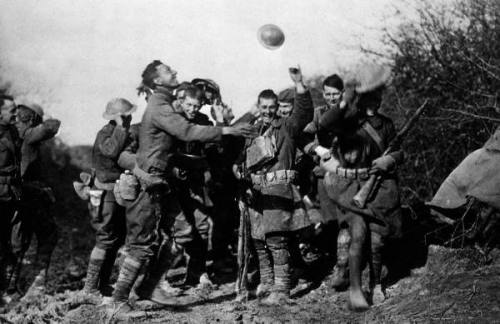The following story was posted on cnn.com yesterday. Please keep Frank in your thoughts and prayers, because an era will end when he passes on.
Washington (CNN) -- The family of Frank Buckles, the nation's lone living veteran of World War I, hopes he makes it to his 110th birthday about a month from now, despite troubling signs he is on the decline.Buckles, who was born February 1, 1901, is thought to be the world's oldest living war veteran. Buckles has slowed down considerably in just the past two months, according to his daughter Susannah Buckles Flanagan, who lives with him at the family home near Charles Town, in the eastern panhandle of West Virginia. A family friend who visited two weeks ago says he is awake just a few hours a day."When he's awake, he's there with us," said David DeJonge, a Michigan portrait photographer who has spent the past decade documenting the final few veterans from the war that ended 92 years ago. With only one veteran left, DeJonge spends the remaining time helping Buckles represent the memory of his comrades.Despite his advanced age, Buckles had been coming to Capitol Hill to try to persuade lawmakers to grant federal status to an existing World War I monument in Washington that was built in the 1930s. The monument currently honors only those who served from the District of Columbia."I have to," Buckles told CNN when he came to Washington a year ago to testify as part of what he considers his responsibility to those who've gone before him.Although passed by the House, the legislation, known as the Frank Buckles Memorial Act, remains stalled in the Senate. Passage would bestow federal status to both the D.C. location and another WWI memorial in Kansas City, Missouri. His family is concerned he may never live to see the bill enacted.Last month, Buckles was not strong enough and could not make a trip to Washington to review renovations as they began at the D.C. War Memorial. The National Park Service hosted a tour showing the first real improvements in decades at the site, fixing a neglected walkway and dressing up a deteriorated dome and marble columns.Learning of Buckles' decline, the office of Rep. Shelley Moore Capito, R-West Virginia, sent word to the family last week that "she would like to offer her thoughts and prayers to him," at a time "Mr. Buckles' health has taken a turn for the worse."As an Army corporal in what was known as the Great War, Buckles drove an ambulance in France.Even if the monument becomes part of Buckles' legacy, his family is concerned the Pentagon has not fully considered what can be done to honor him after his death.His daughter says the Military District of Washington will support an honors burial at Arlington, including an escort platoon, a horse-drawn casket arrival, a band and a firing party. She has expressed concern that Army officials have told her they cannot provide honor staff for any related memorial services that don't take place at the National Cemetery.
A proposal from Rep. Ted Poe, R-Texas, calls for ceremonies in the Capitol, where Buckles' casket would be displayed with honors. The family is concerned they would have to bear the cost of supporting the display and that the U.S military would decline to participate.So DeJonge, the family friend who also serves as president of the WWI Memorial Foundation, told CNN he has asked American allies to help give Buckles a proper sendoff when the time comes."The French are in," DeJonge confirmed, "they plan to send a Defense Ministry official, and hope to contribute at least two honor guards and pallbearers." A British defense official has told the family that the UK would send the air-vice marshal and possibly the British ambassador."It has long been my father's wish to be buried in Arlington, in the same cemetery that holds his beloved General (John. J.) Pershing (commander of the American Expeditionary Forces in WWI)," Flanagan wrote, appealing for help from Sen. Joe Manchin, D-West Virginia. "I feel confident that the right thing will come to pass."



